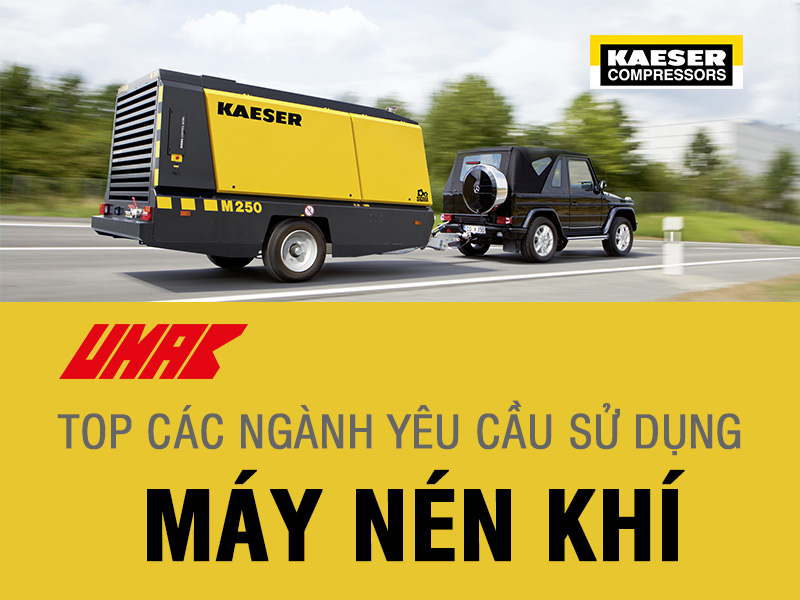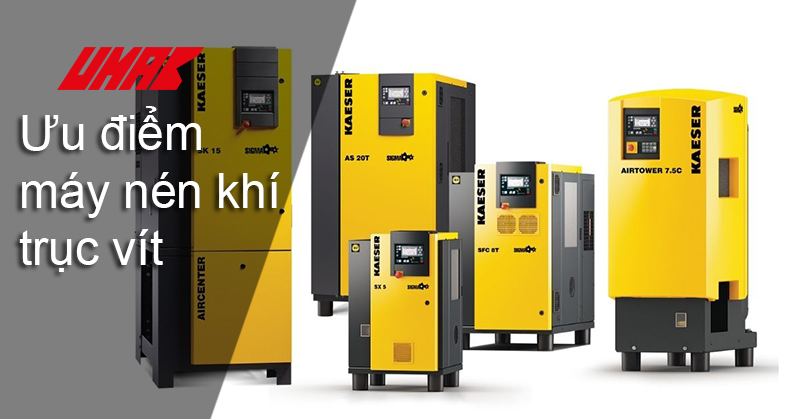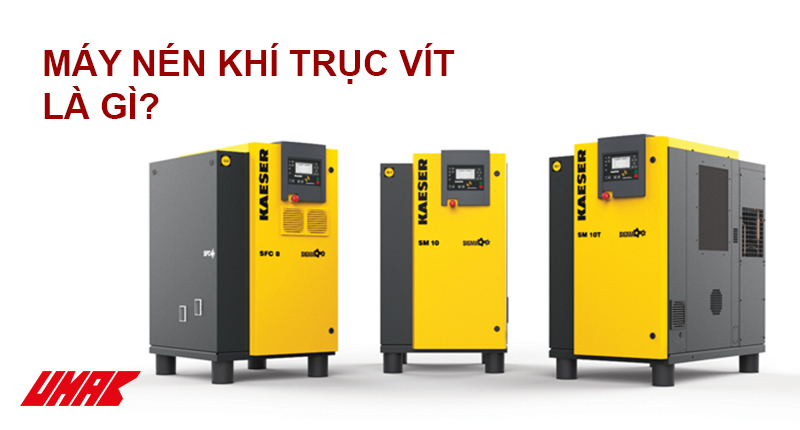What is an Air Compressor?
Air compressors are widely used today and play a significant role in various human activities, such as construction, shipping, sandblasting, truck repairs, road surface demolition, and other tasks that require high air pressure. So, what is an air compressor? Let’s explore the different types of air compressors and their operating principles in the article below!
Mục lục
Concept: What is an air compressor?
An air compressor is a type of machine consisting of mechanical components designed to increase the pressure of a gas, which results in an increase in the energy of the gas stream while compressing it, leading to an increase in pressure and temperature. Air compressors draw in air from the surrounding environment and store it in a compressed air tank, thus creating high-pressure air within the tank.
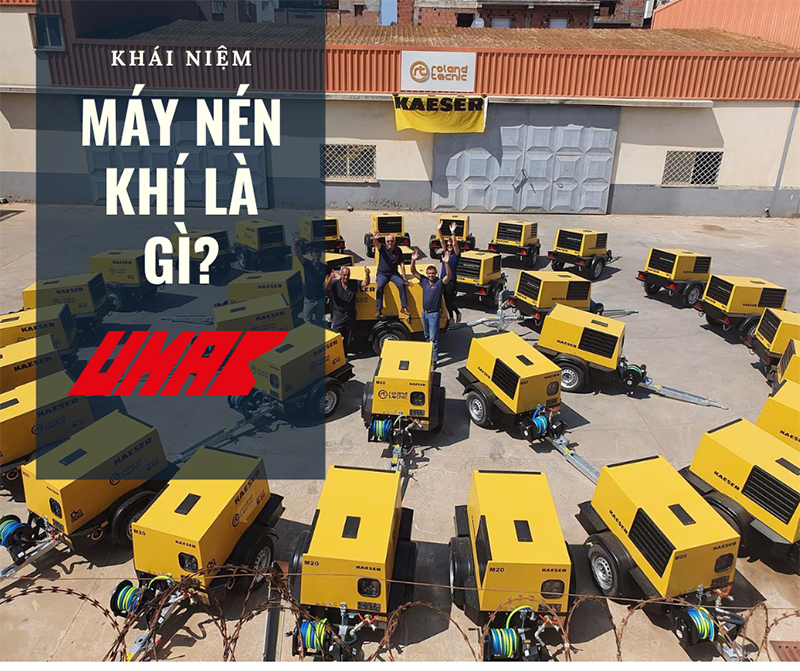
From the compressed air tank, the air is distributed to various tools such as air spray guns for dust or water blowing, or to machines with rotating components like screwdrivers, drills, sanders, and more. These machines typically have a small pneumatic wrench, and when high-pressure air is introduced into it, it pushes the blades or vanes of the wrench, allowing these machines to operate and perform their intended functions through the appropriate transmission mechanism.
Principle of Operation of Pneumatic Equipment
An air compressor operates by compressing air under pressure to create energy, which is stored in a tank for later use. Similar to a balloon, pressure accumulates when compressed air is intentionally released, converting potential energy into usable kinetic energy. From there, this energy transfer can be harnessed to power various pneumatic tools.
Industrial air compressors work much like internal combustion engines. Generally, the operation of an air compressor involves having a pump cylinder, a piston, and a connecting rod to transmit energy for various tasks. These fundamental components can supply air to inflate objects like tires or inflatable pool toys, or they can provide power to operating tools such as drills, nail guns, grinders, sanders, and spray guns.
There are various types of air compressors, each with distinct characteristics. In general, the differences are not too significant, as they all revolve around how an air compressor handles the displacement of air.
The 4 Most Common Types of Air Compressors Today
Rotary Screw Air Compressor
Rotary screw air compressors provide energy for manufacturing processes with a reliable source of compressed air in numerous industrial, commercial, and warehouse applications. They are the preferred choice for users who require continuous pressure over extended periods.
To ensure that rotary screw compressors operate as efficiently as possible, these devices have developed their own unique rotor configuration (Kaeser brand). SIGMA profile rotors offer energy savings of up to 15% compared to conventional rotor designs.
Rotary screw air compressors are the easiest to maintain as they are equipped with an internal cooling system and require minimal maintenance.
(Note: The translation provided here assumes the information is about a specific brand or model of air compressor. If this is not the case, you can modify the translation accordingly.)

This equipment generates energy through two counter-rotating fan blades. Air gets trapped between the opposing fan blades, creating pressure inside the casing. Thanks to an internal cooling system, these air compressors are designed for continuous use and have a capacity ranging from 5 horsepower to 350 horsepower.
Piston Air Compressor
The optimal working cycle for piston air compressors is between 60% and 70%. Therefore, they are the best choice for high-cycling operations with maximum loads, especially in small industries, workshops, and smaller industrial sectors.
Piston air compressors have more moving parts compared to rotary screw compressors, and these parts are lubricated with oil for smooth operation.
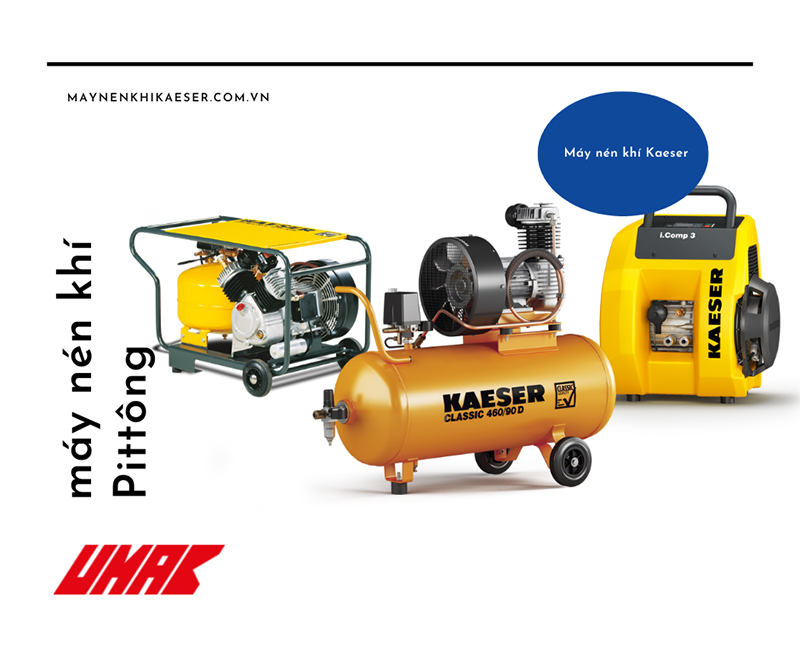
This type of air compressor operates through a piston inside a cylinder, compressing and displacing air to create pressure. The machine can have single or multiple stages, affecting the range of pressure it can achieve.
Centrifugal Air Compressor
Centrifugal air compressors slow down and cool the incoming air through a diffuser to generate potential energy. Due to the multi-stage compression process, centrifugal compressors can produce a high amount of energy in a relatively small machine.

They require less maintenance compared to rotary screw or piston compressors, and some types can produce oil-free air. Air compressors are used for more demanding construction sites such as chemical plants or steel manufacturing centers because this type of machine can achieve a capacity of around 1,000 horsepower.
Axial Air Compressor
This type of air compressor achieves the highest air delivery, ranging from 8,000 to 13 million cubic feet per minute (cfm) in industrial machines. A centrifugal compressor is used for this type to generate a broader range of volume.

On a larger scale, axial air compressors tend to have multi-stage designs due to their relatively low compression ratios. This type of air compressor is capable of increasing pressure by first accelerating the air. It then slows down the air by passing it through curved blades, gradually increasing its pressure.
Key Features of Air Compressors To select the right machine, it’s essential to understand the features of air compressors to handle tasks and simplify work:
- Oil-free pumps reduce maintenance and prevent oil contamination in compressed air.
- Belt drive systems provide smoother operation compared to direct drive systems.
- Thermal motor protection prevents damage due to overload.
- Adjustable discharge systems allow you to release exhaust air directly from your workspace.
- Multiple couplers enable you to handle various tasks without switching connection tools.
- Accessories and tools like hoses, nail guns, and blow guns add value to your investment. Not all compressors come with air hoses.
- You can purchase additional air tanks to increase air storage capacity.
For more information about pneumatic equipment, please contact us at the hotline: +84 833 486 586 or visit our website at www.maynenkhikarser.com.vn to learn more!



 Tiếng Việt
Tiếng Việt